-193 Rambler Cross Country Station Wagon (1961-68)
In the search for suitable models to produce in 1959 and early 1960, Meccano returned to a company and a model it had released in 1958, the “Nash” Rambler. Management must have been convinced by the design department that an updated version of this model would be well received by the buying public in the same manner achieved by the first “Nash” Rambler, sales number 173. So too American Motor Corporation (AMC) must have thought likewise as an added sales tool for its real cars. AMC had in more recent years, provided Meccano with sales literature and rough design plans for the 174 Hudson Hornet Sedan during 1957 that saw that model released in August 1958.
No doubt Meccano with its previous contact with Rambler and their earlier 173 Rambler (mistakenly called a “Nash”), approached AMC so it can be presumed that the company again offered Meccano with as much assistance as they were able, with a view to the model helping to sell more Ramblers! I wonder if Meccano had an arrangement to supply Rambler with a quantity of 193 models that could be presented to customers by selected dealers? Now that is a question that perhaps our American members could investigate!!
Unfortunately, no Meccano drawings have survived over the years, so we are unaware of how the design progressed and the subsequent changes, if any, were carried out, so a lot of the changes with the Rambler Cross Country Station Wagon are purely conjecture as to when they occurred. The 193 Rambler Cross Country Station Wagon (giving its full and correct title as used by Meccano, not as listed in the PDF file) was released in July 1961 with its arrival being announced in that month’s issue of the Meccano Magazine in a full page advertisement on the back cover together with its fellow new arrival the 155 Ford Anglia.
The model is a very accurate representation of the 1960 Rambler Cross Country Station Wagon. It was the fourth model manufactured by Meccano to have a silver plated plastic grille and bumpers, its predecessors being the 150 Rolls Royce Silver Wraith (the first with this new feature), 186 Mercedes Benz 220SE and 194 Bentley S2 Coupe. For the purist, this departure from the usual silver-sprayed casting was sacrilegious! It was also the first Dinky Toys to have a roof luggage rack, albeit in plastic. Its earlier 173 Nash Rambler had the luggage protector strips, but no rack.

“The Toyman” wrote glowingly about the new addition to the Dinky Toys stable, “It is full of authentic detail, even down to the petrol filler cap”. (More on the petrol filler cap later!) I particularly like the diorama at the top of the introduction by The Toyman. He was quite correct when he wrote, “the whole setting is so picturesque and authentic that you might at first glance, imagine that it is the actual car on a real promenade which gives you an idea how very realistic the new Dinky Toys model is.” I will let the reader take it from there with copies of the pages from the magazine.
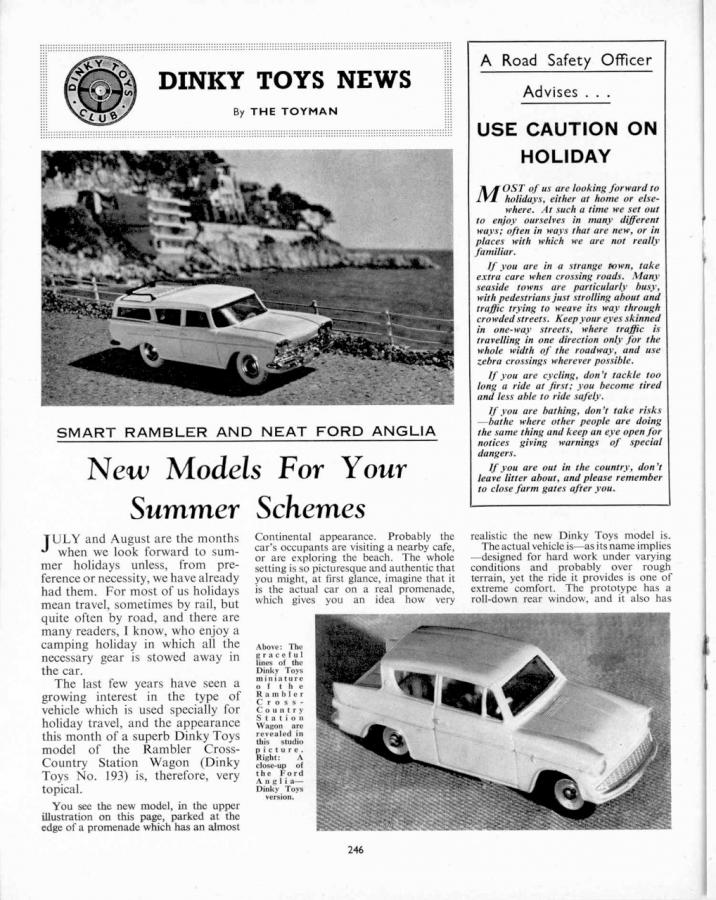
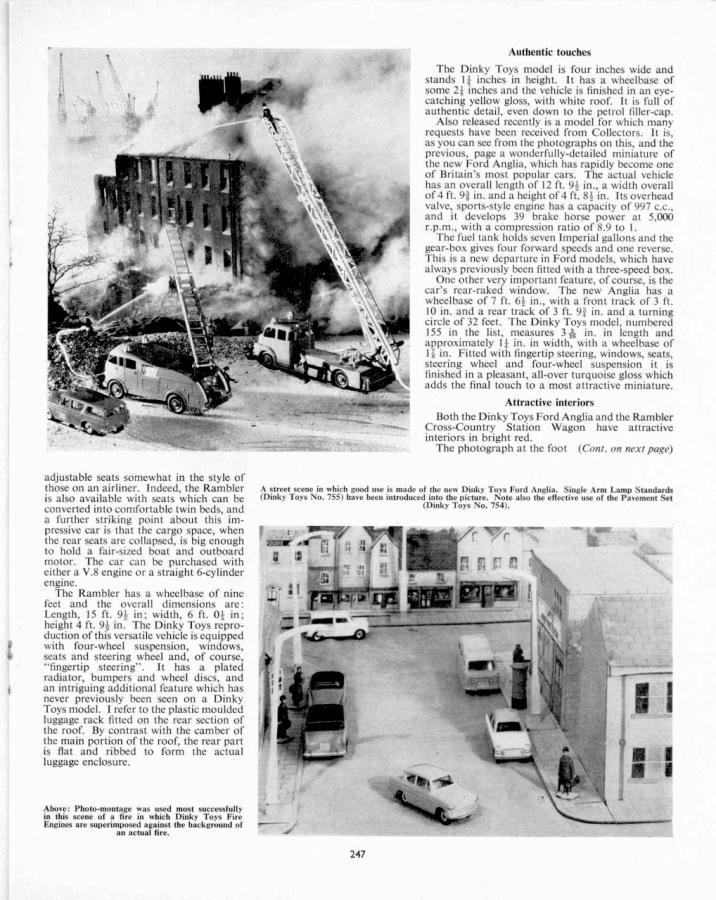
And the end result - a fine model, and one I unfortunately never obtained at the time either from pocket money saved or the generosity of a family member as a gift during my last couple of years of Dinky Toys collecting in the 1960s.
As a testament to the skill of the engineers, draftsmen (and women?) at Meccano, I offer the following comparisons of the real motor vehicle and the “toy”.
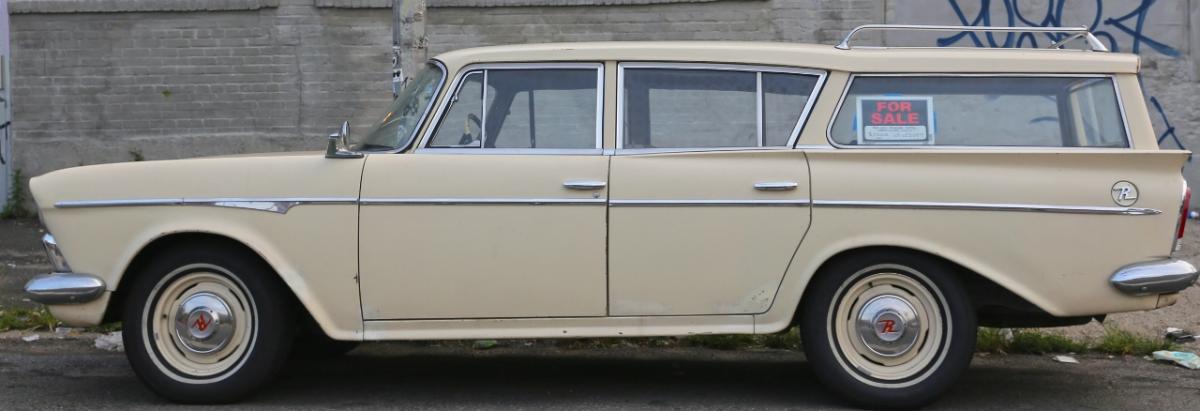
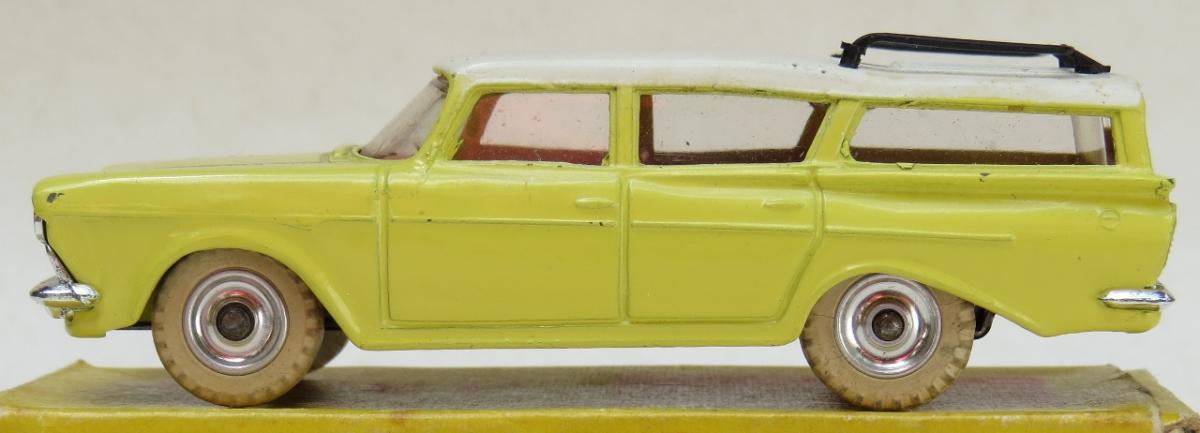
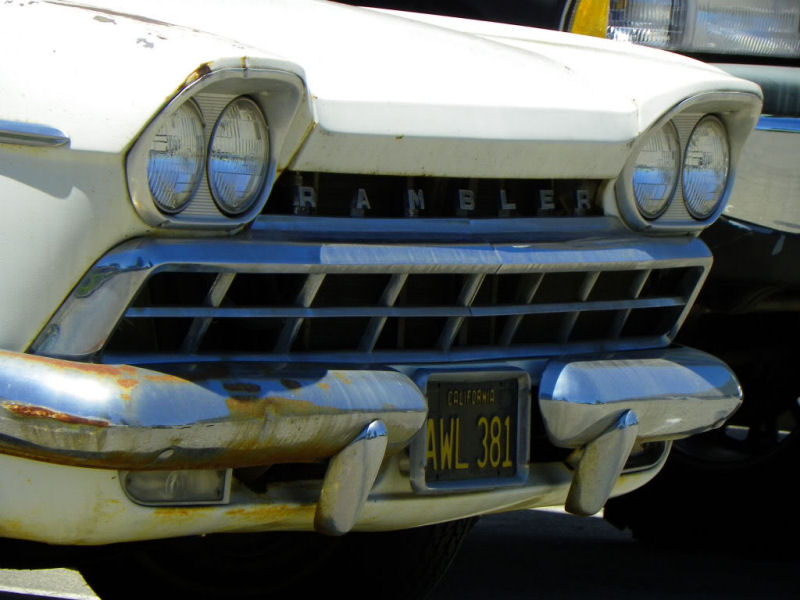
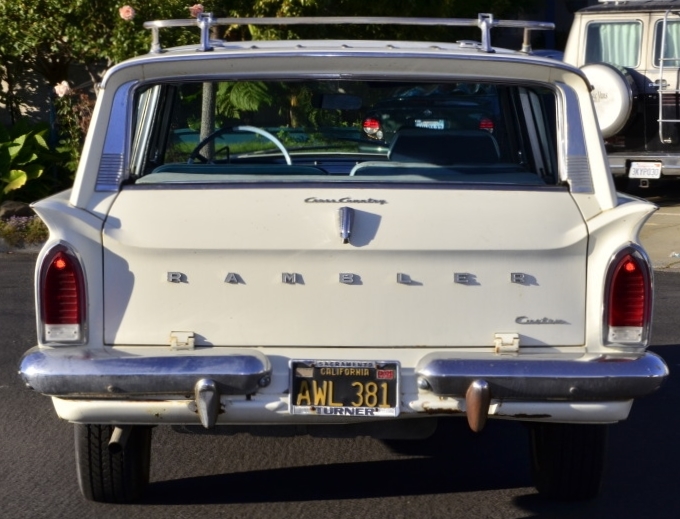
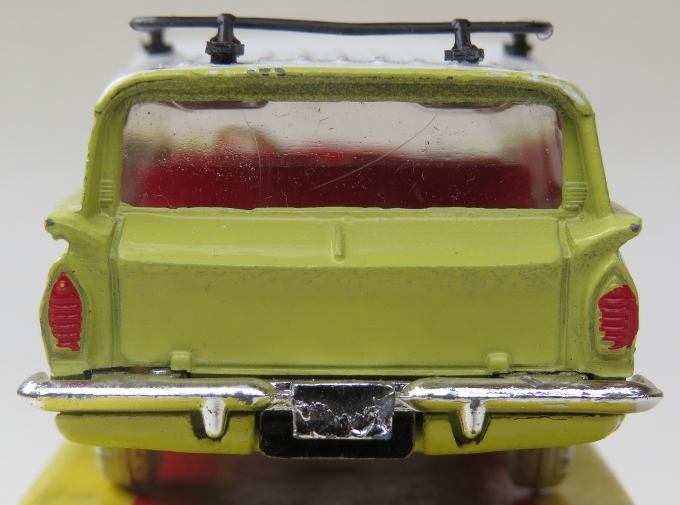
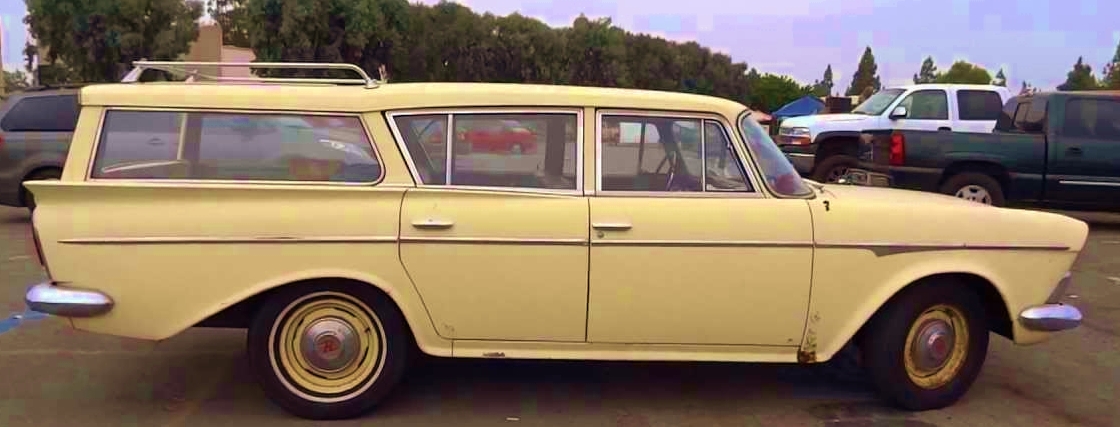
Rather belatedly this omission of not having acquired an example of this model when I was a tad younger has been rectified, with the one below of impeccable quality which arrived in October last year from a highly respected auction house in Bourges, France, as well as a “few more” in the preceding years since resuming this hobby!
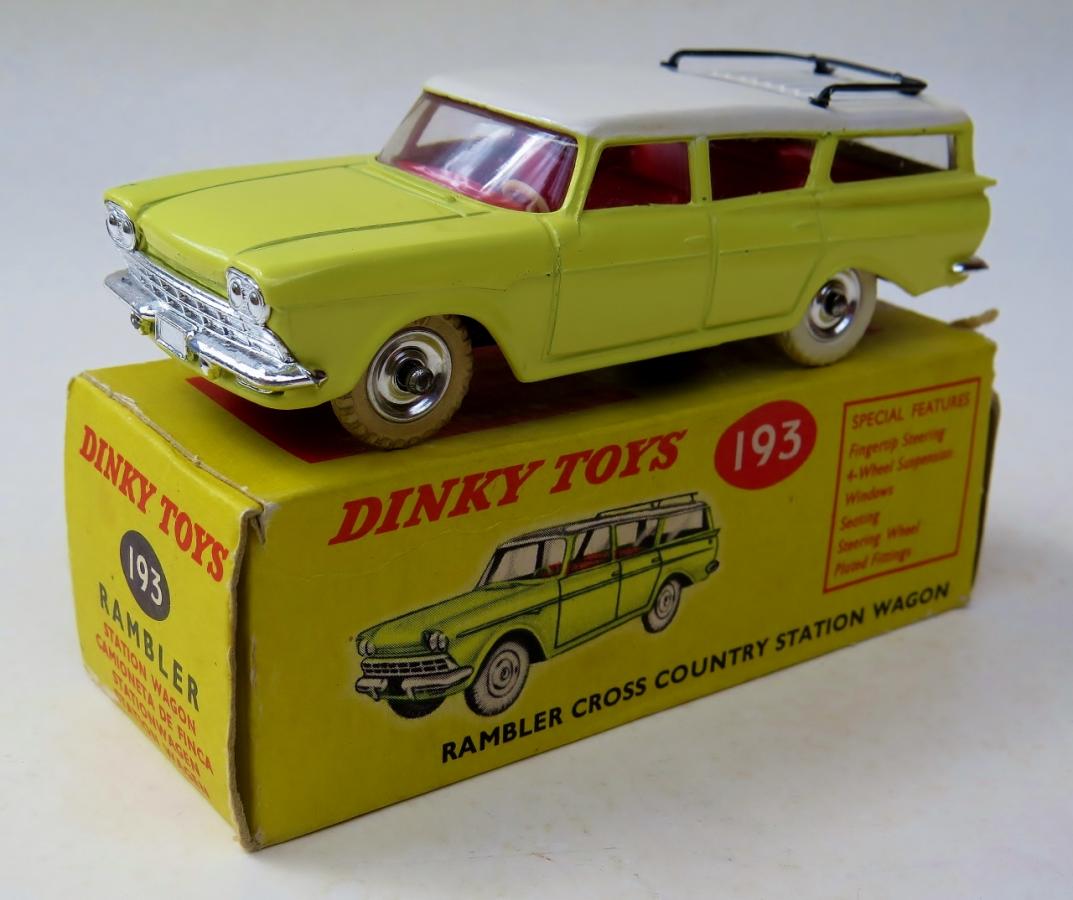

With the exception of those models assembled in South Africa in 1962 and 1963, for the little Dinky Toys collector elsewhere, he could have any colour as long as it was in primrose yellow and white with red plastic interior! Although to be fair with Meccano, they did manage to get the tint slightly wrong at times, as some models are more yellow than others with the odd ones having a ting of green in the mix. This can best be seen with the following images. Note that when photographed using incandescent light, the different shades of Primrose Yellow is quite noticeable, as too the shades of the interiors, but photograph the same models in the same position under natural outdoor lighting, and the difference with the shade of yellow is negligible – or very little difference at all!


The majority of 193 Ramblers had red plastic interiors but a small number had an off-white, almost “dirty” white plastic interior. (Please excuse the isolated small chips on this model – it was a case of grabbing it when the opportunity presented itself!)
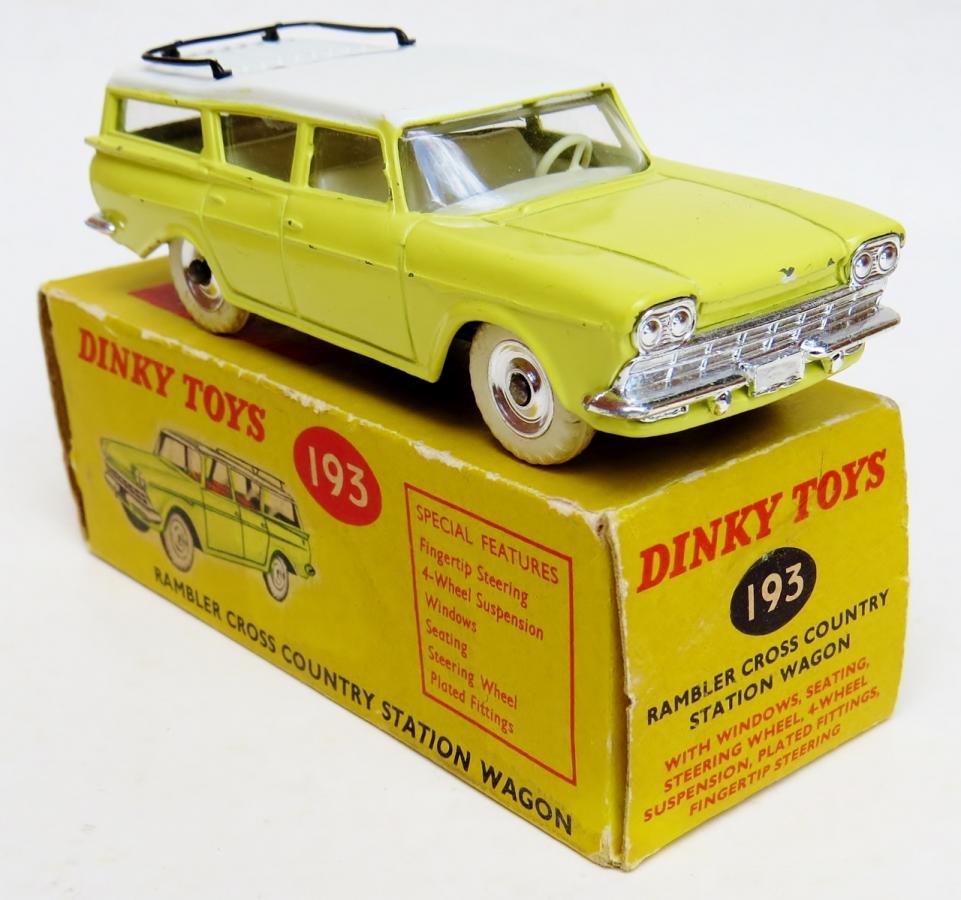

The boxes were always identical, except for a small batch showing the model in a blue colour scheme. These boxes are quite rare. I bought my example (with the missing fuel cap) from Vectis recently and I was surprised with its final price. Either serious collectors were asleep or simply failed to recognize the box! Perhaps this Post may change this in the future! If not, then nobody has bothered to read it!
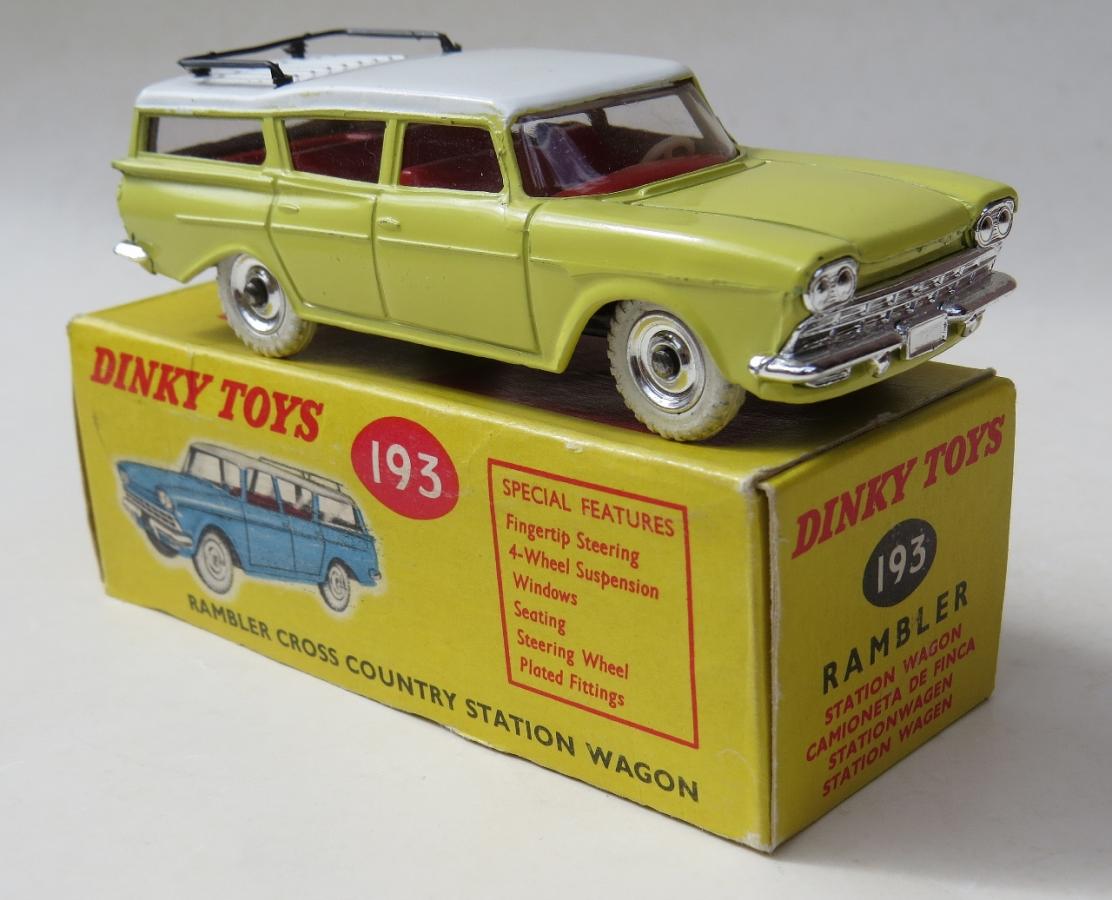
This was the picture that accompanied the auction, although as can be seen, the colour of the model is more yellow than under the condition when I took my photograph, a more greenish-yellow which is a truer representation of the actual colour:

Although the PDF file has the period the model was available as being 1961 to 1969 which confirms other sources such as Ramsay’s British Diecast Model Toys Catalogue, according to documentation available to me, catalogues, price lists, and dealer order forms, the model was still available for Dealers to order as of June to August 1968 but with the model not being included in the Dealer Order Form for December 1968 it can be assumed it had been deleted by then and did not reach 1969.
Now for a few variations!
I have had a total of 18 193 Ramblers in my collection over the years with models showing the damage to the windscreen pillar and varying damages with the left front mudguard being in the majority, and very few displaying little wear with the die/moulding in this area. Obviously the problems started very early in the life of the 193, and various attempts were made to resolve this issue.
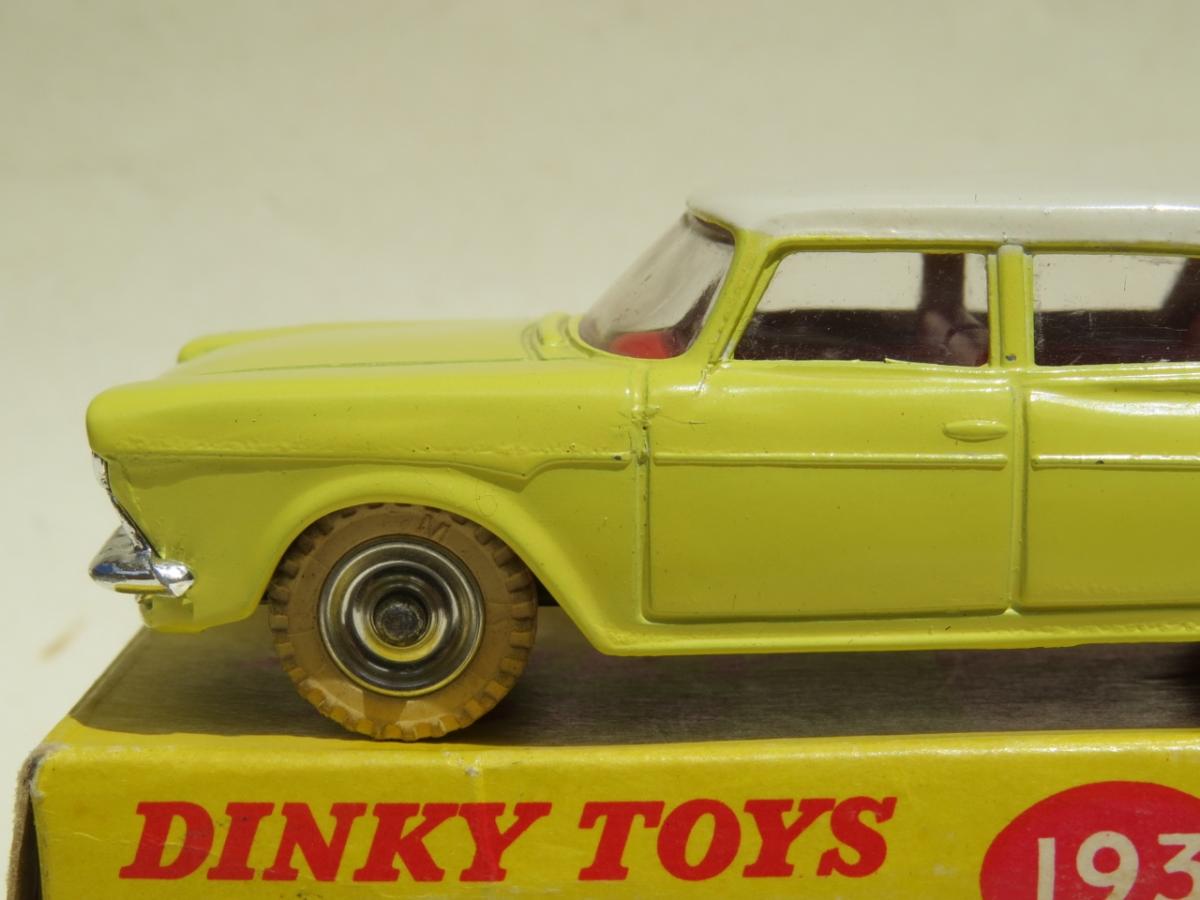
And this was the real problem:

Another area where problems arose is above the grille, between both headlights in the area of where the hood/bonnet closed on the real car.
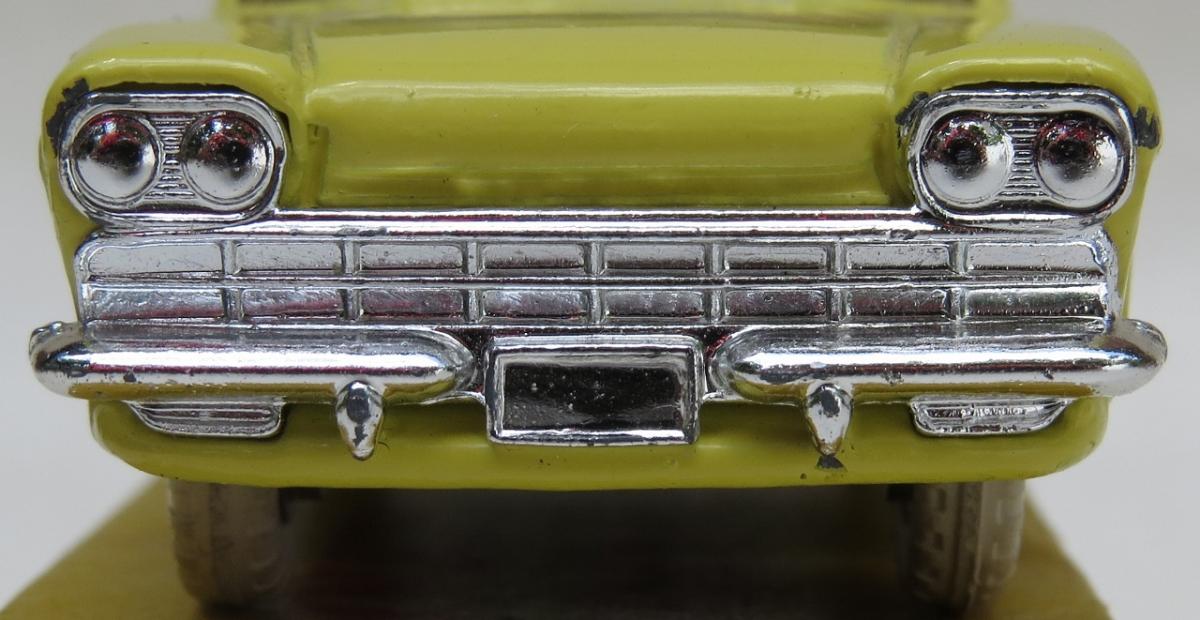
A very early production model of the Rambler Cross Country Station Wagon which later developed a problem as can be seen with the following image:
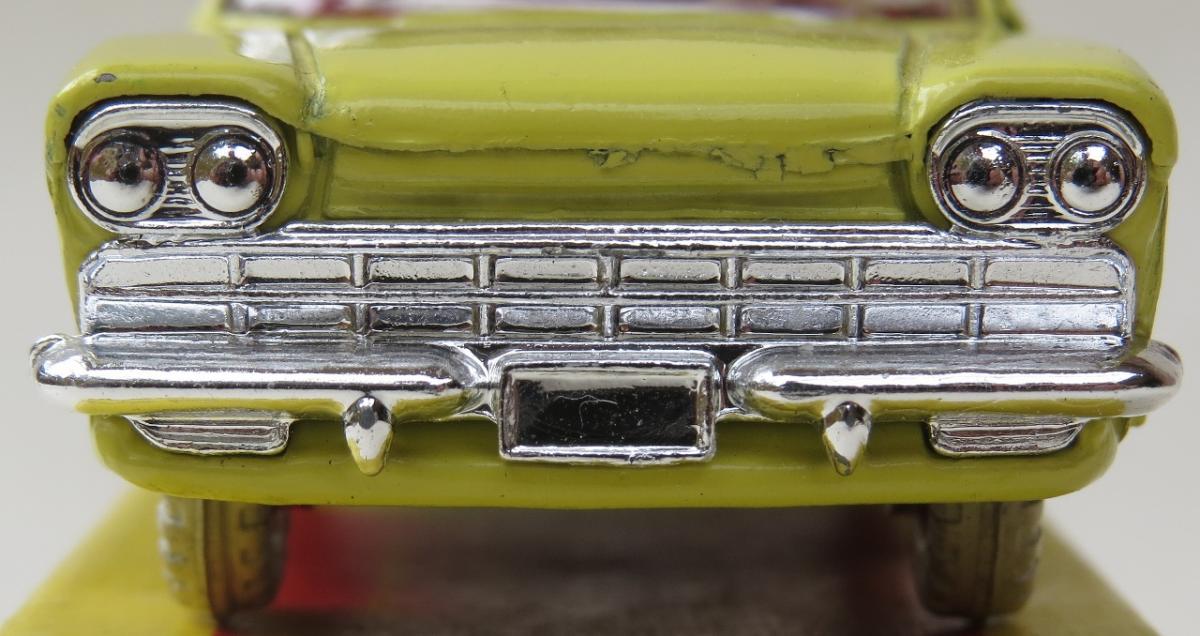
Towards the end of the model’s production life, when the paint code became a little “mixed” to become greenish-yellow, a major flaw in the die occurred in the LH (driver’s side) rear in the area below the bumper. In the course of rectifying this problem, the Rambler lost its fuel cap, (remember I mentioned this earlier!) and quite excessive marks can be seen under the paintwork near the bumper most likely caused as a result of a very coarse file being used. This can be seen with the images below, both won through Vectis, the first in 2008 and the second in February 2017.
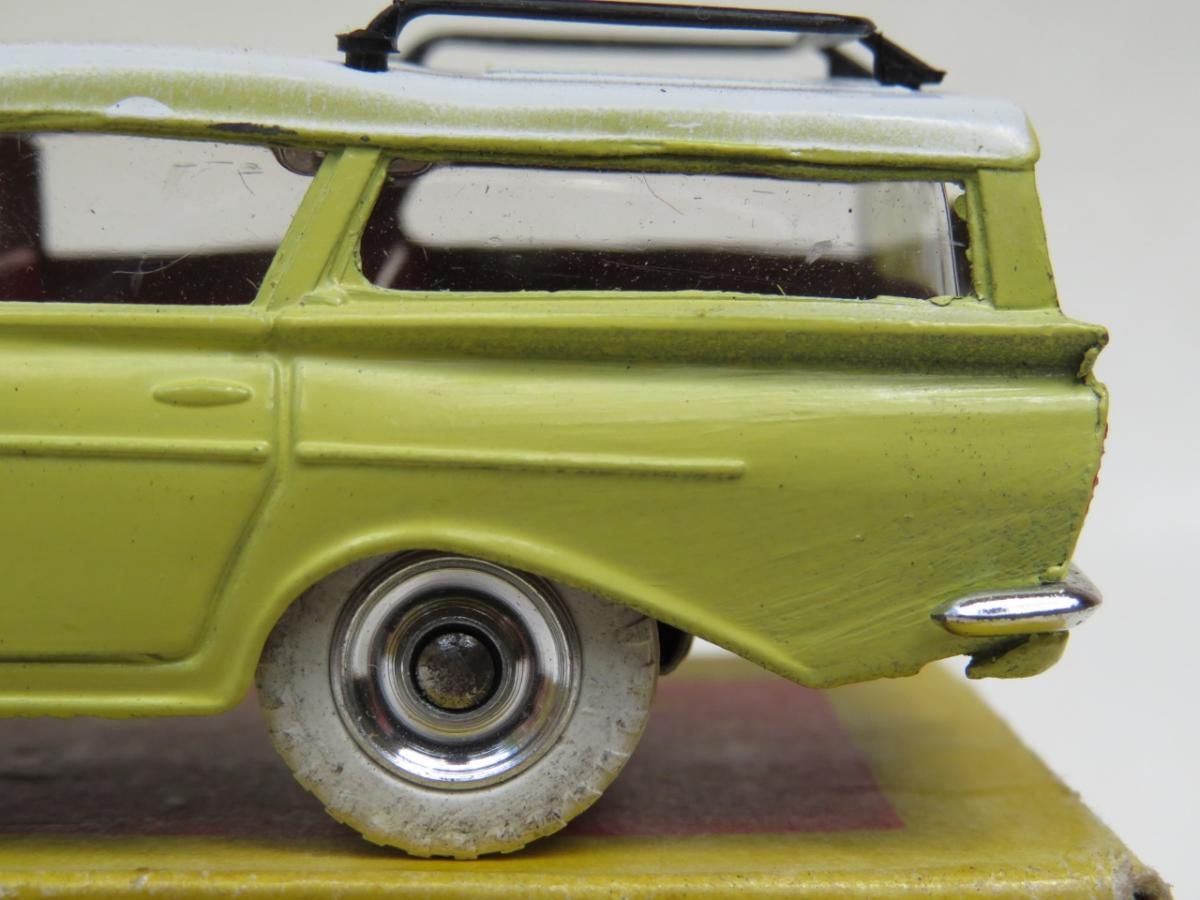
This is the second model I have obtained, with the file marks not as coarse as the model above.

Compare the above with the image below of an early production 193:

As with all new issues, occasionally a problem arose while performing simple tasks, such as striking the second Pattern data imprint details onto the base plate, with the additional striking being inadvertently made over the wording MECCANO LTD and MADE IN ENGLAND on at least two examples:
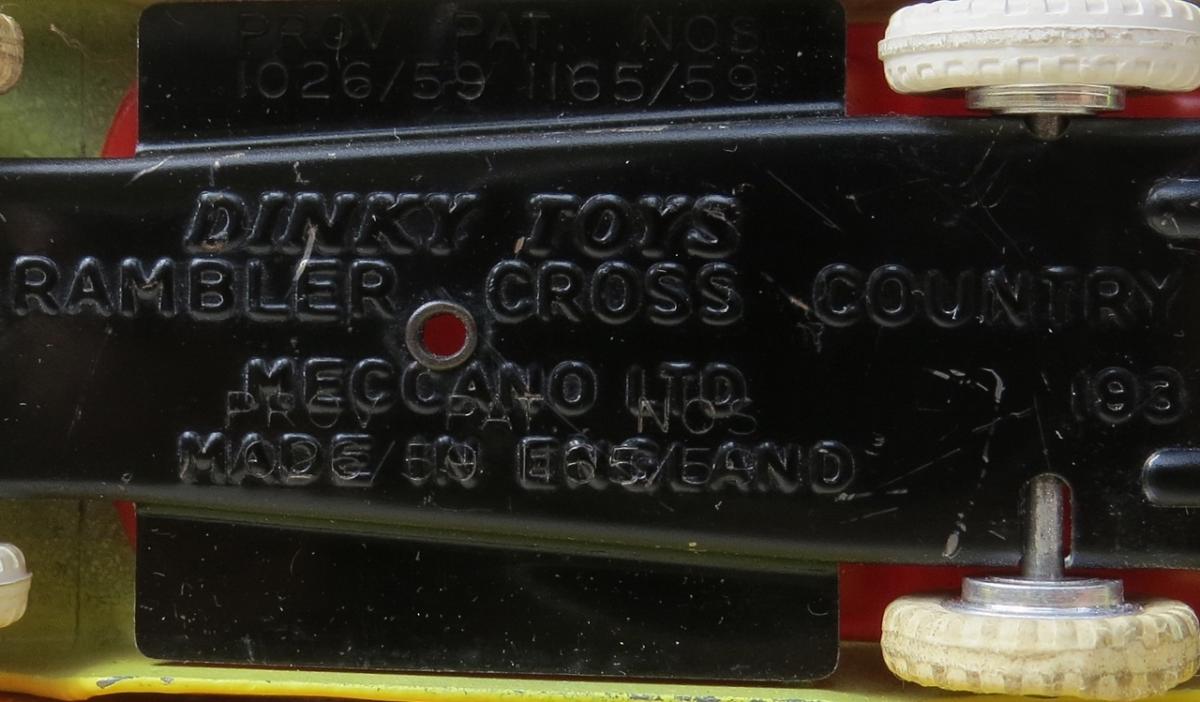
This was how the majority were struck:
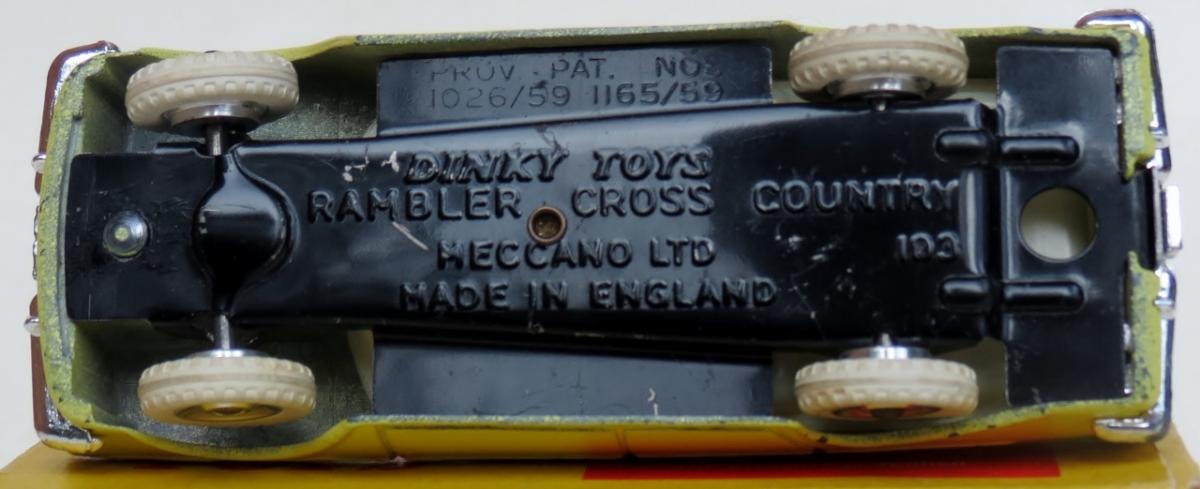
Although the final issues of this model, those with the fuel cap missing as mentioned previously, the stamp was often inverted:
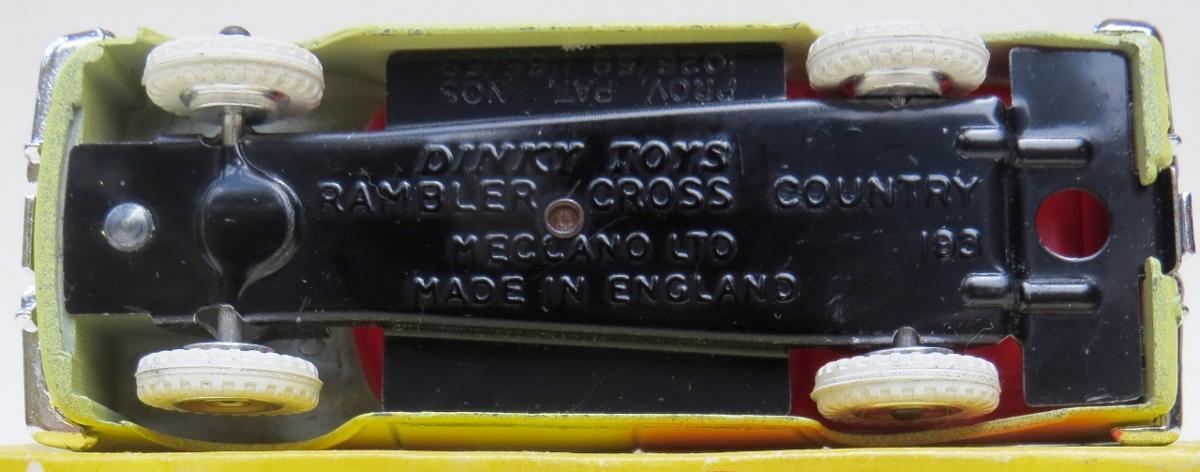
The hubs were always the large, smooth, rounded spun aluminium type, although at least one model was shod with the smaller, less smooth version as used firstly with the 120 Jaguar E Type (March 1962), and subsequent small cars (with the exception of the 198 Rolls Royce Phantom V.) The first picture is of the usual spun alluminium hubs, with the second with the slightly smaller aluminium hubs that was eventually to become the standard hub for small cars.
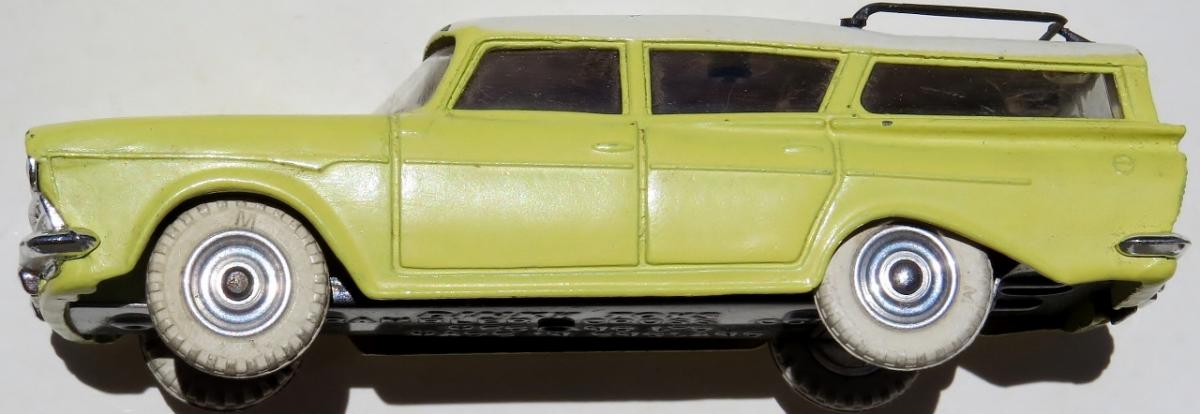
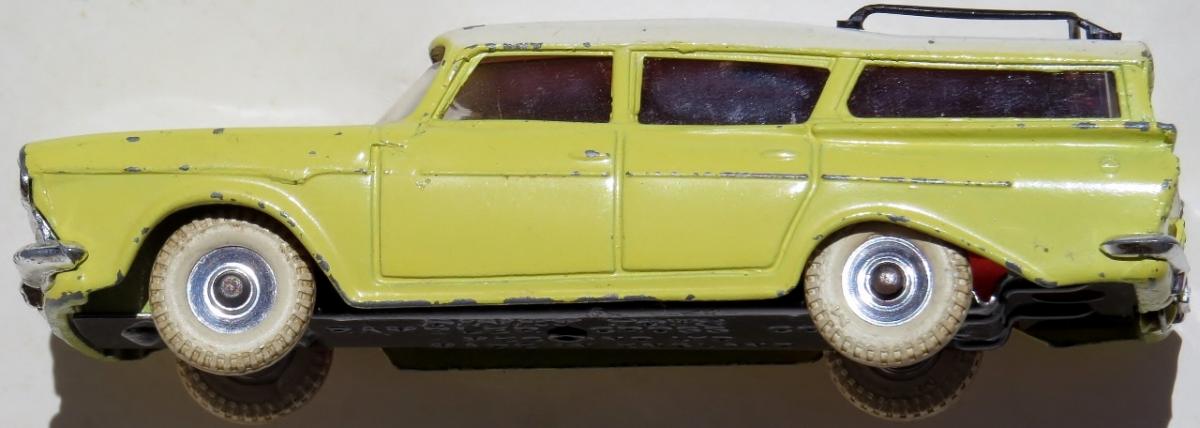
The Dinky Toys 193 Rambler Cross Country Station Wagon remained on sale together with its earlier stable mate, the 173 Nash Rambler until the 173 was retired in May1962, leaving just the 193 to continue the marque’s presence in the Dinky Toys sales literature until it too was retired in late 1968, with the model not being included in the December 1968 Dealer Order Form. With a production life of seven years, it exceeded the production period of its earlier model by almost three years. I wonder of the bright paintwork for the 193 was the selling point for aunts/uncles, even though the 173 had two different colour schemes. It is surprising that the 173 remained in the sales list for so long after the introduction of the 193 when it was on sale for 3/7 as against the 193 at 6/6 which must have made some impact with the early sales for the 193. The 193 did have some selling features that were unavailable with the 173, such as its suspension and interior seats.
Before ending this dissertation I have mentioned previously the South African assembled 193 Rambler Cross Country Station Wagons and their various colour schemes, far in excess of what the average collector outside South Africa could hope to acquire. These are my Cross Country Station Wagons that had been assembled in South Africa, not in the condition as shown by those included in the Model Collector article in the May 2014 issue, but still with warts on all (except for one!) Nonetheless, I am still very content!
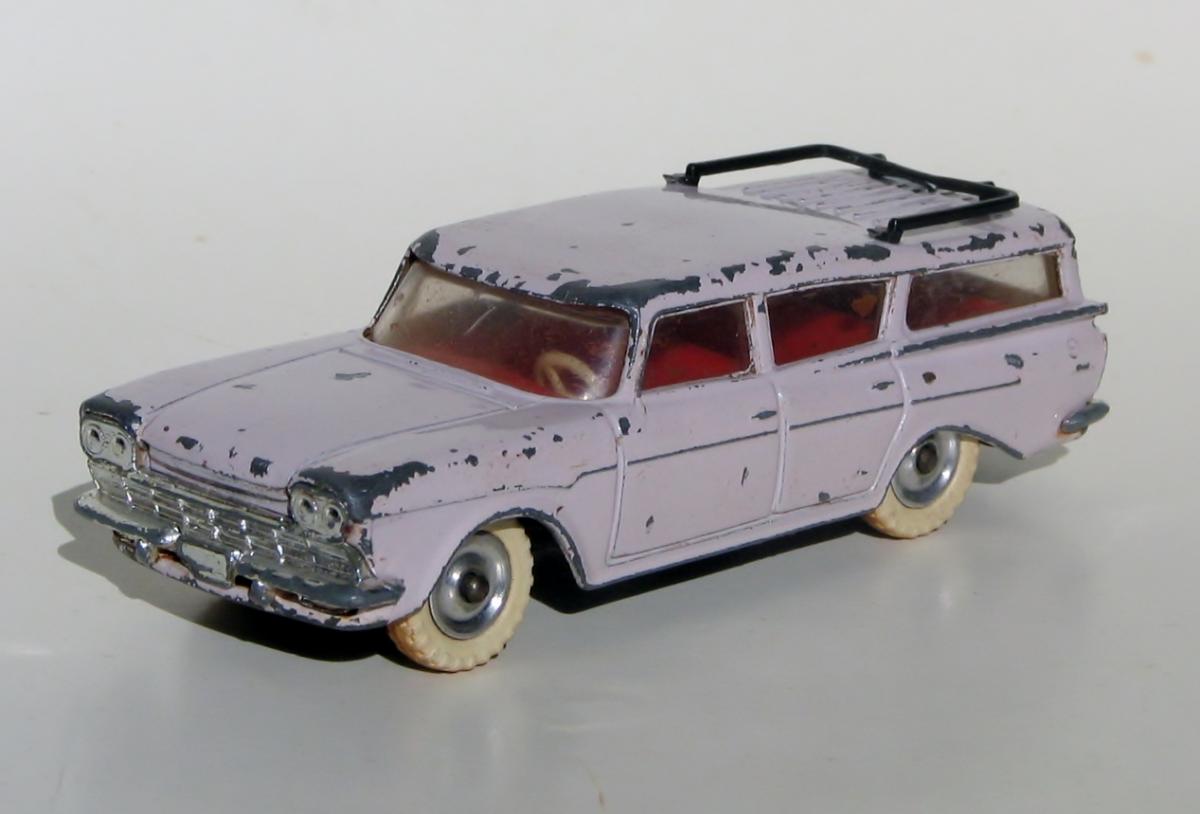

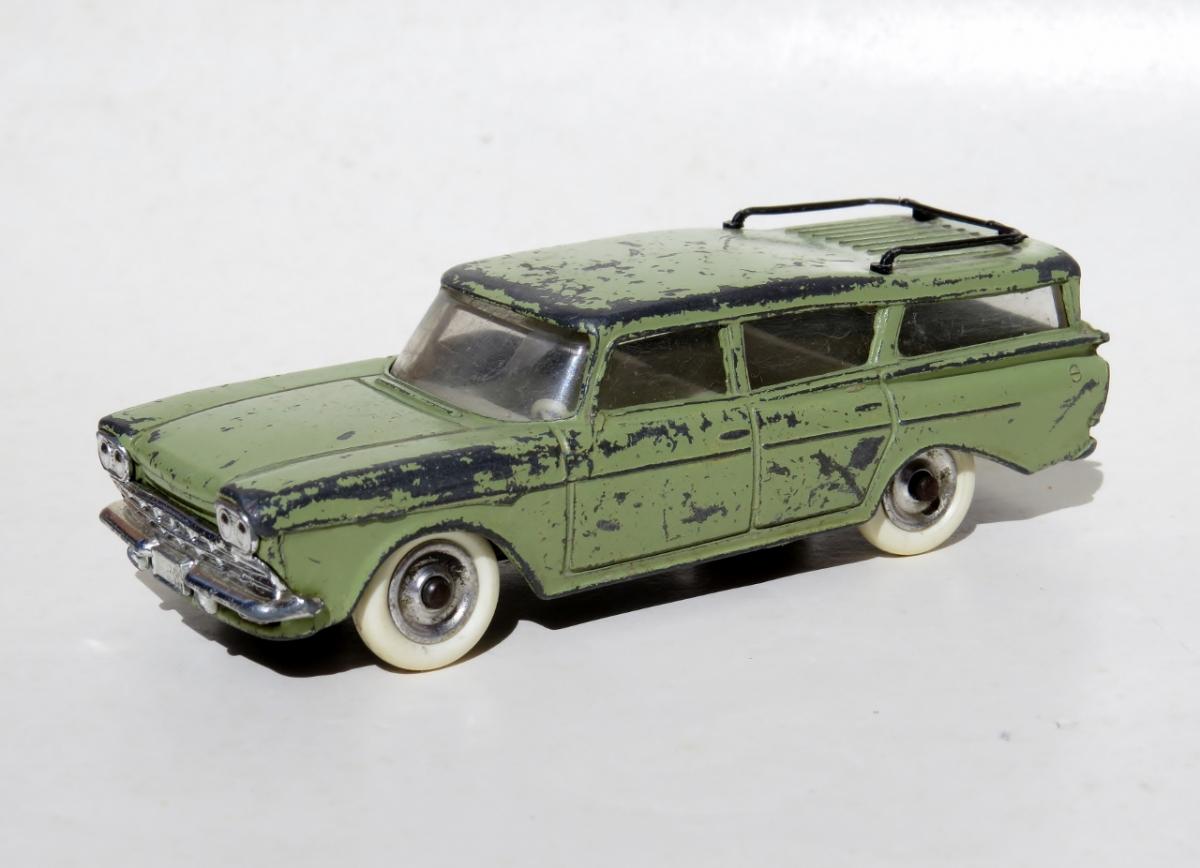
With the above example, I have never seen a South African model with any other colour interior than red. The tyres on this model are replacements obviously. As to its authenticity, the rivet matches those used in other South African assembled models, and of course, its former owner was the well-known Dinky Collector, the late John Kinchen.
Of course, my two examples were not the only colours available to buyers in South Africa. Here is an excerpt from an article in May 2014 issue of Model Collector magazine.

The1960 Rambler Cross Country Station Wagon that Meccano chose to model went on sale in the United States in December 1959, and became quite a success, with it and its sedan versions assisting in bringing AMC back into credit. So with that, here, are a few photographs of the real vehicle, taken in 1960 and subsequent years.
Meccano created a very faithful rendition of the 1960 Rambler Cross Country Station Wagon, although the image immediately below is that of a 1960 Rambler Custom Cross Country Station Wagon, I have yet to find a real example with the rather garish colour scheme selected by Meccano!
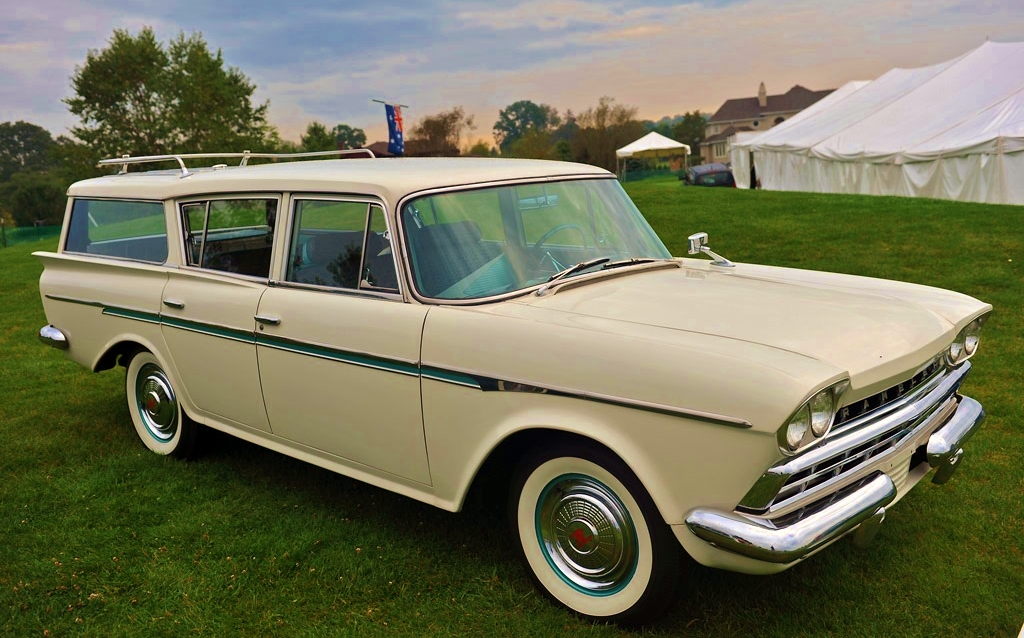
Here are some more images of the real vehicle:
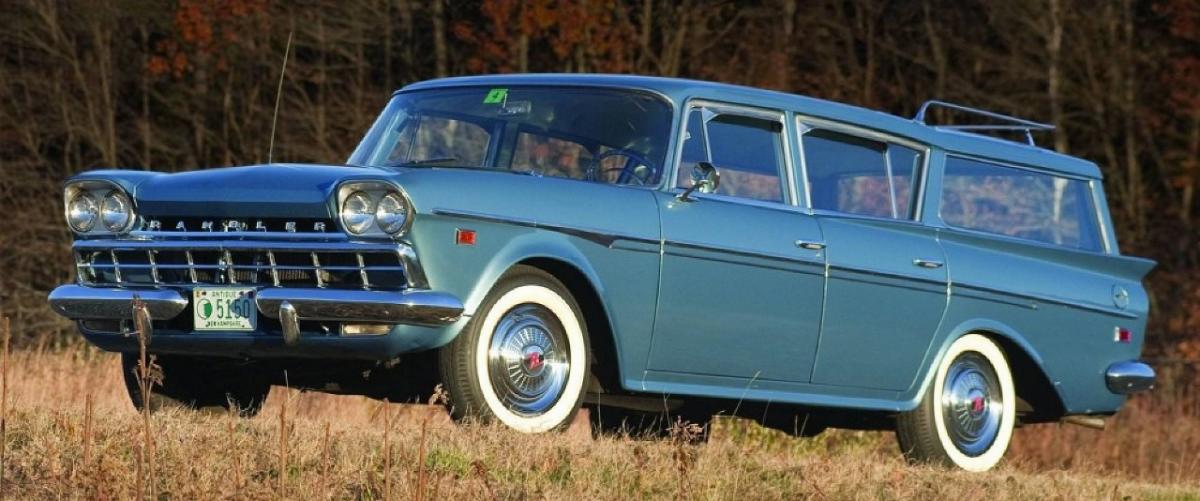

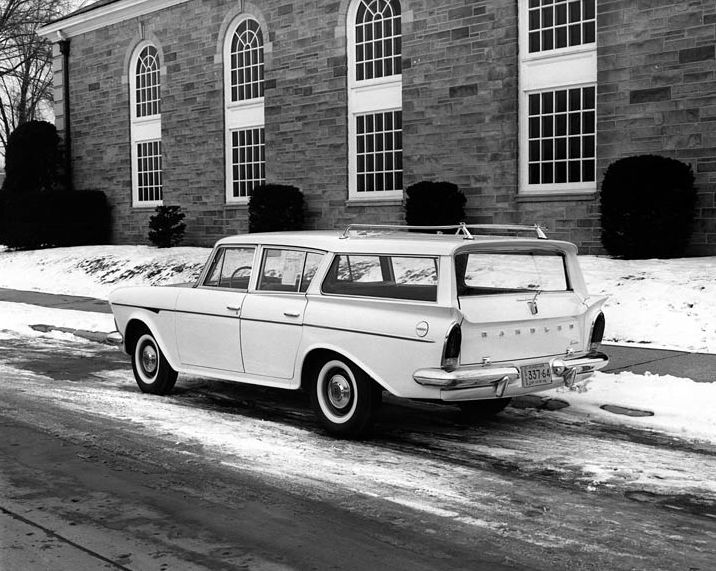
And for the benefit of our hot-blooded readers, although the model (vehicle, not the girl!) is actually a 1960 Rambler Custom 8-Seater Cross Country Station Wagon, not what Meccano made, a six seater Rambler “Super” Cross Country Station Wagon. The major differences between the Custom 8-Seater and the Super six-seater being the seating capacity, the side-swinging tail door and the additional side garnish, and also not included was the attractive lady sitting in the back and the one holding open the rear door!

Now without the bevy of beauties!
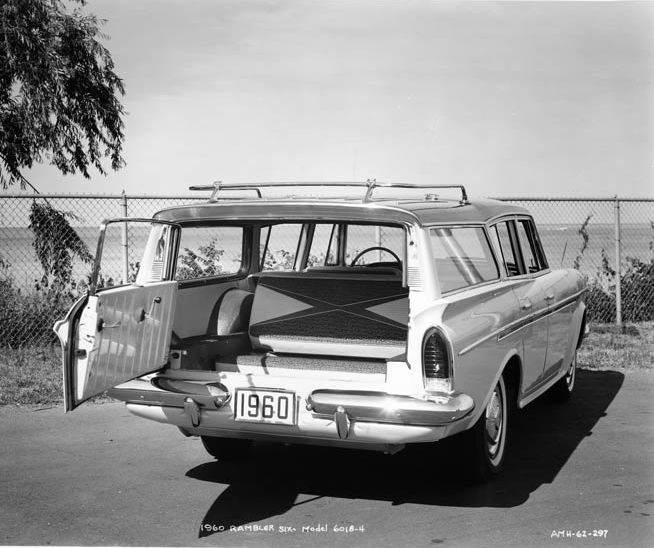
And for those who missed the ladies, here are some more but wearing elegant 1960s swimwear!! The model of vehicle according to the caption is a “Rebel” with the photograph having been taken by the factory.
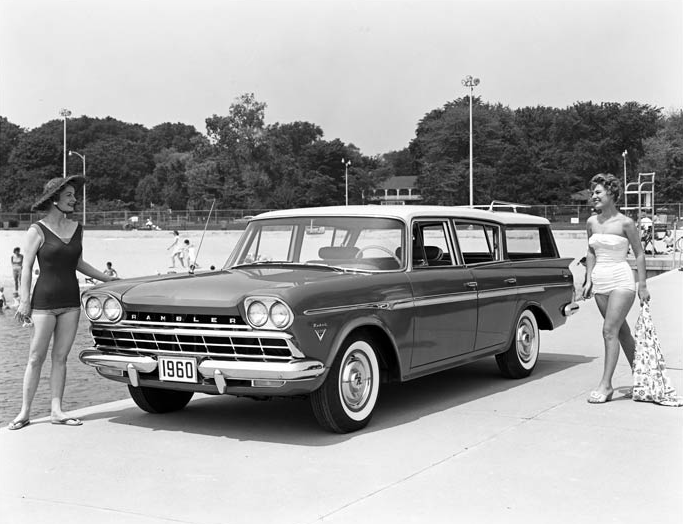
And on that note, regards to everyone!!
Bruce H. (150)
20170317/1074:0102
Thanks Bruce, I am not very familiar with this model but I dare presume this is the most elaborate and well documented article ever produced on this model. No doubt many of us will forgive you the horrible isolated chips on the cream interior version of yours.![]() Kind regards, Jan
Kind regards, Jan
Bruce---I thoroughly enjoyed reading this well researched post on the Rambler Cross Country Station Wagon. Since it is outside my normal collecting range, I knew very little about it. What is amazing to me, is that Meccano chose to make another very, very similar model to the original Rambler Station Wagon, and then, even more amazing, to make them both for a period of time....incredible to say the least!
The other comment is that I am also somewhat puzzled by Meccano's continued infatuation with Hudson-Nash, and Studebaker- Packard automobiles, while paying scant attention to much more common and often seen cars from General Motors and Ford. At least in the late 1950's, Chrysler was well represented by several offerings from both France and England. A total lack of Chevrolet models until much later is so strange. Perhaps Meccano was able to engineer better deals with these independent manufacturers. But a very nice writeup!
Best regards, Terry
Jan and Terry - Many thanks for commenting on my new topic. Actually, the 193 Rambler Cross Country Station Wagon was in reality well outside my original collection in my younger days.
In July 1961 when the 193 Rambler was issued, I was in my final year of high school and during that year I received four newly released Dinky Toys, but not a 193. These four spent their days in the drawer of my study desk and I confess that they were regularly brought out and admired in the midst of studying Shakespeare!
Then in 1962 having started work in a large Bank my presents that year included only one newly released Dinky Toy, and then of course came 1963 and the 196 Holden Special Sedan which was the last Dinky Toys I ever received as a present. The Holden arrived as a present for Christmas 1963 and its selection was due to Dad working in a Holden dealership. By this time I was well on my way to other more interesting things! I think Mum and Dad slowed down with buying me a Dinky Toy for either Christmas or birthday (five days later) by 1960 as they were still very much aware how much they meant to me at Christmas.
It is strange to say the least why two very similar models were on sale simultaneously for almost a year, with the new version being almost double the price. It is possible the one factor that dictated this was a surplus of 173 Nash Ramblers whose retirement may have been planned to occur much earlier.
I too often wondered why Meccano selected certain brands and ignored others with some of the latter being far more popular in the real world. Wouldn’t it be fascinating to see a list of planned models (apart from those listed in The Great Book of Dinky Toys) which for one reason or other, never made it to the final cut. What was it that ticked all the boxes with those that ended up in the catalogues and available for us, parents, aunts and uncles to spend their money on? Was some form of financial support given to Meccano by companies endeavouring to have their product in toy format, primarily as a means of selling their real products? What better way to sell a real car by having the name bandied around the dinner table leading to Dad buying a car in the future at the urging of the family in particular young sons!
The following link will take you to an AMC training film on selling the 1960 Rambler Cross Country Station Wagon and other vehicles in the range.
The film was recorded on an LP record and the “ding” you will hear is the sound for the projectionist to advance the film to the next segment. I am not sure how it worked then, but at least we do not have to advance any film – it does it for you! I am sure you will find it interesting!!
Kind regards
Bruce (150)
20170321/1075:0052
Bruce,
Thanks for the wonderful posts on the Rambler!
Regarding how the AMC training presentation worked, the answer is simple -- this wasn't a flim, but rather a filmstrip, as commonly used in schools and other situtations where economy was important. Filmstrips were stored in circular cardboard or metal boxes and held a sequence of still frames. For use, they were simply threaded into an appropriate projector, where moving from frame to frame was under manual control (in schools, by a teacher or by the lucky child allowed to be the film operator).
-- Jon
Jon
My sincere apologies for not having the courtesy to respond to your Post above before now. I am uncertain how this came about, but I am sorry. Thank you for explaining the process used with the AMC training film, which actually rekindled in my long-lost memory bank the first occasion I was witness to a film presentation in the manner you suggested. I was in the Infants Department of the Armidale Demonstration School when our class was given such a presentation, with the film being in monochrome. I do not recall any "ding" to change the film strip though - I was more intent on seeing the actual film! It would have been circa 1952 and two years later, my father, an ardent photographic enthusiast took his photographic hobby to the next level from black and white to colour slide film.
Thank you again for explaining the process. How times have changed in such a short period with us now in the realm of the digital age.
Kind regards
Bruce Hoy (150)
20172609/1163/1934
Putting extracts from the Forum in the newsletter is good for those who like me don’t go on the site that often (as already spending too much time on the computer/iPad for business). Bruce’s piece is very illuminating and makes me examine my Dinky with a closer eye. My 193 is virtually mint boxed (marked 6/-) and must be a later one as no fuel filler cap, and faint ‘file’ marks. I hadn’t noticed before but yes a slight greenness under artificial light but yellow in daylight. Definitely a Super by the trim, although as Bruce observed nearly all photos show the Custom with a white rear door band as well as white roof and the enhanced side trim (although the rear photo shows the white band, but the extra mid section side trim band missing). It may have lasted well in the Dinky range but was a slow seller in the US, probably as dated. Mine at least has a ‘standard’ base.
Thank you for the excellent article in The Journal Issue 77 April 2020
I have 2 models of 193 One almost mint with the original casting showing the new ish die
The other model is a much later version as it has the casting flaws mentioned ie front , Drivers side pillar, no petrol cap
but I have a very bad top edge to the last window above the boot end side.
The die must have worn away there or the casting was very thin and the window edging was lost in the cleaning process.
Having joined the forum I shall look forward to looking at other models whereI have identified difference while restoration.
Hello Christofer,
Welcome to the club.
Do let us know about the variations you have found we are all very keen on that. Many are listed already but there are certainly many to find specialy if you open the models you may find some variations which are not visible from the outside like for the Daimler ambulance for example
Colleagues:
Regarding the packaging used for the Dinky 193 Rambler Cross Country Station Wagon, the article states the following: "The boxes were always identical, except for a small batch showing the model in a blue colour scheme."
This is not altogether correct. Export window packaging was used for some models imported to the USA. I have one model in my collection that is packaged in the yellow export box used during the mid to late 1960s. I assume that some models were also packaged in the earlier gold window boxes, although I have not seen one.
Hello, Keith Harvie, in his Binns Road Gazette (Vol.1, no.5), lists all gold and yellow cellophane boxes known to him. There, the no. 193 Rambler Station Wagon is stated to be found in both gold and yellow such boxes indeed. Kind regards, Jan
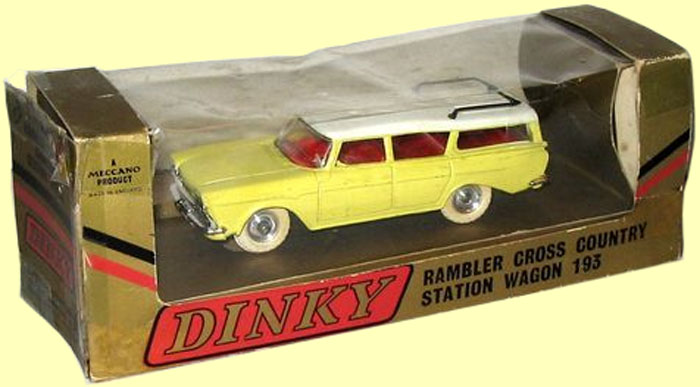
I can confirm the gold Visi-Pac but there were also two different yellow end flaps boxes, one without a halo arround the drawing and one with. The SA boxes where those with the halo.
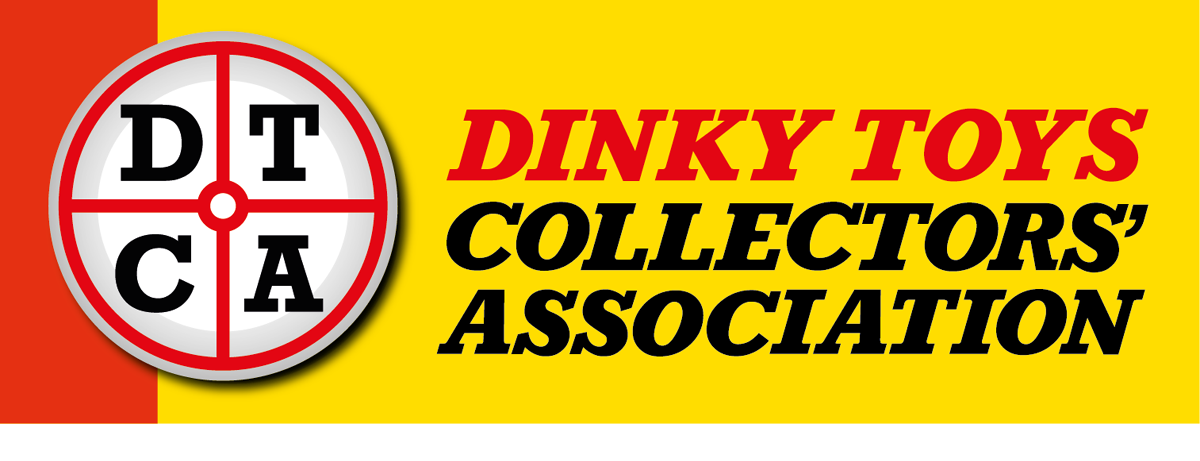

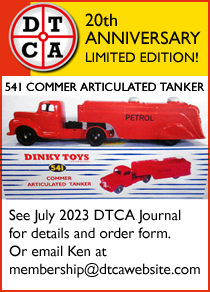

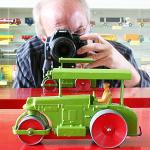
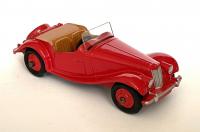

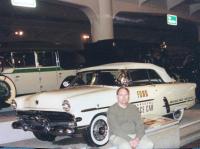

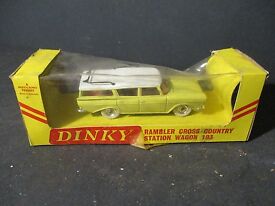
DTCAwebsite upgrade 2023
DTCAwebsite upgrade 2023
DTCAwebsite upgrade 2023
616-AEC with Chieftain Tank
DTCAwebsite upgrade 2023
DTCAwebsite upgrade 2023
DTCAwebsite upgrade 2023
-073 Land Rover, Horse Box and Horse (1960-67)
DTCAwebsite upgrade 2023
-073 Land Rover, Horse Box and Horse (1960-67)
DTCAwebsite upgrade 2023
DTCAwebsite upgrade 2023
-105c and 383 4-Wheel Hand Truck (1949-1958)
-105c and 383 4-Wheel Hand Truck (1949-1958)
DTCAwebsite upgrade 2023
DTCAwebsite upgrade 2023
DTCAwebsite upgrade 2023
DTCAwebsite upgrade 2023
DTCAwebsite upgrade 2023
DTCAwebsite upgrade 2023
DTCAwebsite upgrade 2023
DTCAwebsite upgrade 2023
DTCAwebsite upgrade 2023
DTCAwebsite upgrade 2023
DTCAwebsite upgrade 2023
DTCAwebsite upgrade 2023
DTCAwebsite upgrade 2023
--22c Motor Truck (1933-50)
--22c Motor Truck (1933-50)
DTCAwebsite upgrade 2023
DTCAwebsite upgrade 2023
Trailer Caravans
Trailer Caravans
DTCAwebsite upgrade 2023
DTCAwebsite upgrade 2023